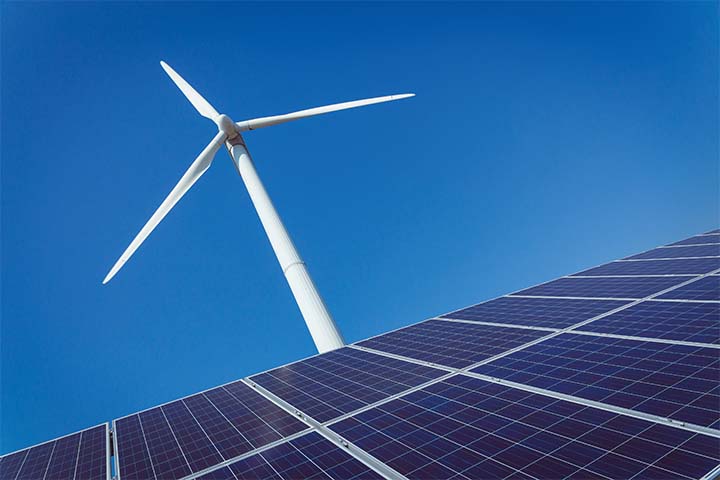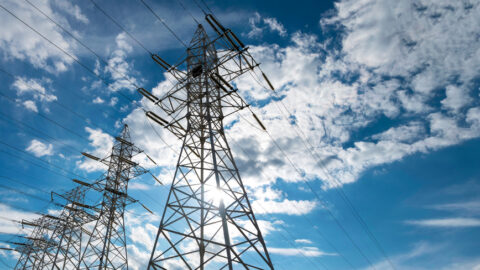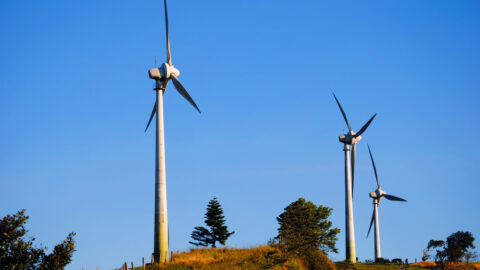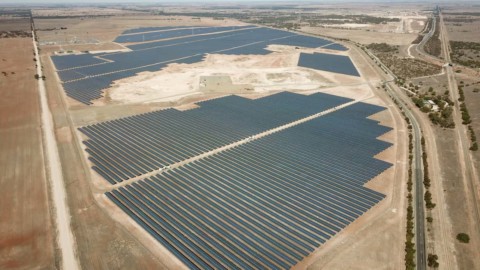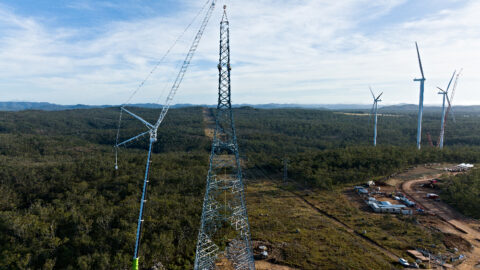By Imogen Hartmann, Assistant Editor, Energy magazine
With Australia’s relatively small population being spread across large, remote geographical areas, a lot of pressure is put on the electricity grid to cover long distances. In response to this challenge, as well as an increase in the cost-competitiveness of renewable technologies, the industry is increasingly turning to microgrids as a solution.
So, what is a microgrid? According to Energy Networks Australia, the term microgrid can have many different meanings in regards to size, purpose, load capability, sustainability and infrastructure in relation to the grid.
Simply put though, a microgrid is an autonomous or local energy grid, with the control capability to operate separately to the traditional grid.
There are several ways a microgrid can be powered, including solar or other renewable resources, batteries or distributed generators.
Sizing also varies in microgrids, and can be defined by geographical coverage, consumers served, peak load or generation capacity.
This is where the discrepancies in microgrid definitions come in, as there are also picogrids, nanogrids and macrogrids.
Being a standalone system doesn’t always qualify a system as a microgrid – it could simply be a minigrid or remote grid.
Microgrids often utilise existing grid infrastructure, but they also exist as separate physical structures.
Although the template for what a microgrid is may be dynamic and varying, they are quickly becoming established as an essential and lucrative component of Australia’s energy network, with the remote microgrid market expected to increase to $20 billion by 2024.
Microgrids servicing macro needs
Offering solutions to principal energy industry challenges such as increasing electricity costs, the demands of servicing a large geographical area, and aging infrastructure, microgrids are becoming an increasingly important component of Australia’s energy network.
With some remote communities, such as islands, typically lacking energy and water security, there is often a disproportionate reliance on electricity generated using fossil fuels like diesel, which can be costly and logistically intensive.
Similarly, reliance on diesel fuel generation could potentially deter other social and economic development investment.
This means that integrated energy solutions are vital for high renewable energy penetration in island markets.
For Australia as a whole, and the communities in which they operate, microgrids provide more options for energy reliability and independence, as well as opportunities for distributing and storing renewable energy.
The future of microgrids in Australia
A rapid uptake of renewables, the increasingly high costs of extending a centralised generation network and soaring diesel prices make distributed energy systems like microgrids an appealing option for Australian energy.
The benefits of renewable microgrid solutions in Australia’s energy landscape can be categorised into five main categories: reliability, cost and convenience, renewable energy integration, efficiency, and boosting local economies.
Reliability is key
With bushfire, flood and cyclone events becoming more frequent and severe, electricity supply challenges during and after these events are becoming more and more significant.
Electricity dependence during these events also heightens the risk and consequences of physical or cyber attacks, highlighting the need for local energy solutions like microgrids.
In 2009, during Victoria’s Black Saturday fires, power losses impinged severely on the community’s ability to respond.
Following the immediate threat, the challenges continued throughout the aftermath, as power outages and loss of telecommunications hampered the recovery and clean up effort.
Queensland residents experienced similar issues during and after Cyclone Larry (2006) and Cyclone Yasi (2011), where locals were without power for weeks.
These lessons are also being learned around the world. In the United States, Connecticut and New Jersey have invested millions of dollars into microgrids after Hurricane Sandy devastated much of the mid-Atlantic coastline in 2012; and in the Japanese city of Sendai, an experimental microgrid maintained a supply of power and heating to a university and hospital for two days in 2011 following a 9.0 magnitude earthquake and subsequent tsunami.
Advances in technology have demonstrated how microgrids provide reliable power, even during extreme weather events.
Cost and convenience
Power outages, particularly in extreme weather events, can also be costly with supply interruptions often costing states hundreds of millions of dollars.
In this regard, microgrids can preventably offset costs by assisting in maintaining a sustainable energy supply.
Microgrids, unlike regional-scale grid infrastructure, can also be established quickly and cost-effectively.
In 2018, the Australian Renewable Energy Agency (ARENA) made a submission to the Economics and Industry Standing Committee Inquiry, with the aim of informing the committee of microgrids’ potential as an affordable and reliable energy source, particularly in Western Australia.
In the submission, ARENA stated that: “Renewable energy resources and microgrids can help offset the need for large-scale distribution network capital investment and operating costs, thereby reducing costs for industrial, commercial and household consumers, especially in remote areas and fringe of grid situations.”
Integrating renewables
Smaller scale and tailored microgrids can accommodate larger amounts of renewable energy. Australia’s renewable energy is currently expanding ten times faster than the world average per capita.
Over the period 2019-21, Australia’s pipeline for new wind and solar PV systems is 6-7GW. Australia also has the highest solar uptake in the world, with rooftop PV up to 50 per cent a year.
The rapid implementation of renewables contributes to a larger shift towards DER. With the energy landscape now consisting of household energy storage systems, electric vehicles, demand response and energy-efficient appliances, consumers are driving the demand for connected series of microgrids.
Boosting local economies
Microgrids can serve local regions by generating economic value and creating jobs – a pertinent issue in the post-COVID-19 climate.
In March 2020, the Clean Energy Council (CEC) began lobbying the federal, state and territory governments to include renewable energy and energy storage in their COVID-19 response strategies –including microgrids.
The CEC said, “Governments should accelerate and increase funding for the installation of microgrids, stand-alone power systems, community batteries and other programs for bushfire recovery and to build resilience for future summers.”
The CEC proposed that implementing these measures would assist in stimulating the Australian economy, save jobs in the renewable energy industry, and protect households and businesses from high electricity costs.
Challenges still lay ahead
Microgrid systems are still in their infancy in Australia and around the world, which means that along with the opportunities, challenges remain.
Some of these key challenges include:
» Financial investment – the design and construction of a microgrid still requires a significant financial investment
» Energy storage risk – with an ever changing market, energy storage presents potential expense and risk
» Complexity – microgrid design and operation is inherently complex, particularly in regard to unique location designs
» Public information – information and research about microgrids is not adequately available in the public domain
» Regulation – standard operating procedures, quality standards and OH&S standards pertaining to microgrids are insufficient
» Local expertise – it can be difficult to locate the relevant technical expertise on a local level
» Investor risk – microgrids are still a new technology and therefore performance or user behaviour ambiguity may be a deterrent for investors
The Australian Energy Council says that microgrid technologies present both opportunities and challenges for the energy sector, but that states like Western Australia are already demonstrating the energy system optimisation made possible by microgrids and associated technologies.
In The Power of Microgrids, IEEE Smart Grid Chair Dr Massoud Amin, the “father of smart grids”, said he envisioned “a hybrid system with a central power backbone, sectionalised for reliability and resilience, with a cellular power network of microgrids overlaying it”.
“Each individual microgrid, whether for a building, campus, or ‘smart’ city, would rely on local energy resources as much as possible to serve local citizens.
“Each individual microgrid would coordinate with others and with the entire system.” Australia, with its vast land and regional communities, seems perfectly suited to adopt and pioneer microgrid technology.
As well as being suitable for Australia’s urban sprawl, their use of renewable energy make them an appealing solution that is well in-line with the national target of net zero carbon emissions by 2050.
With funding, feasibility studies and demonstration initiatives quickly developing for microgrids, it’s clear that growing the number of microgrids in Australia’s energy network is already well underway, providing a promising outlook for the future.



